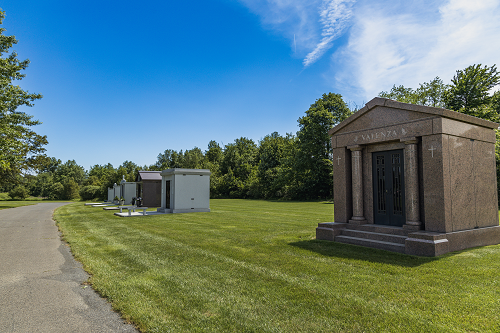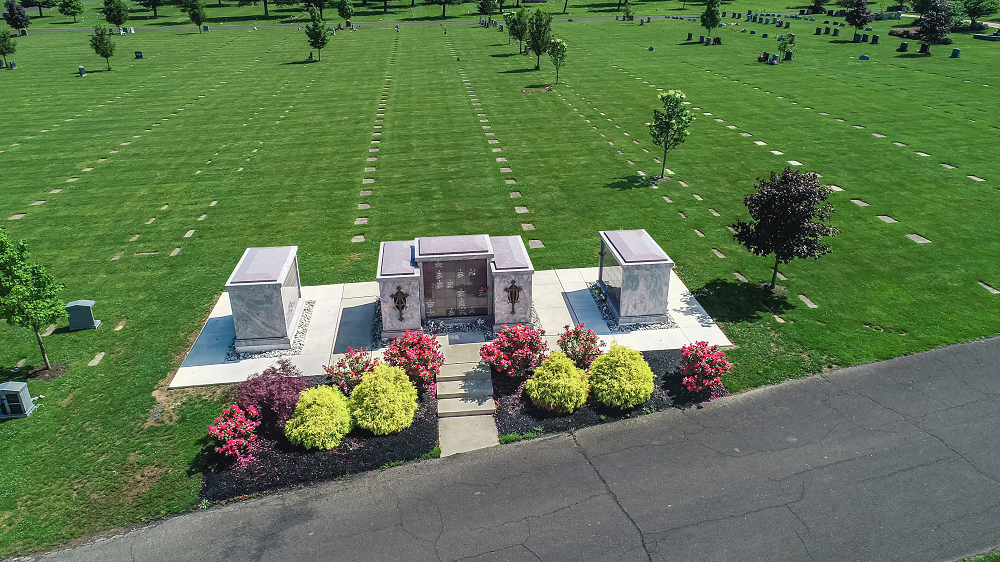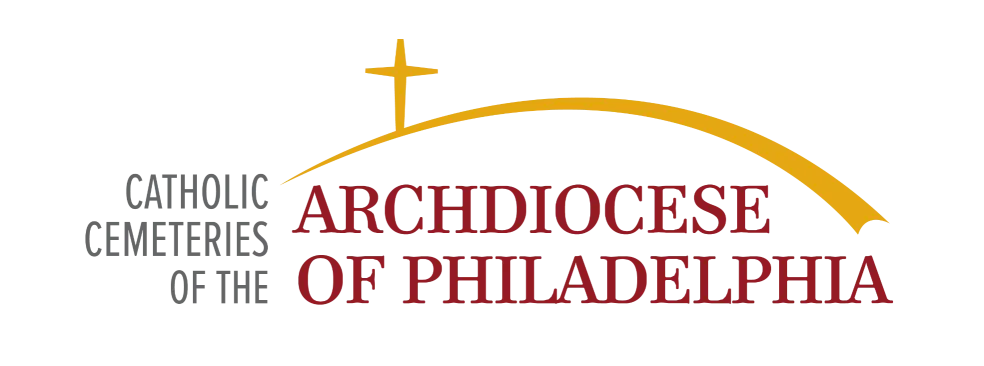
As one of the oldest and most widespread Western religions, Roman Catholicism is well-known for being steeped in tradition. The Catholic Church relies on rituals that its faithful follow. Many of these rituals deal directly with the disposition of remains after the death of a Catholic.
Typically, a member of the Catholic faith is laid to rest in a traditional in-ground casket burial. This takes place after a funeral mass at a church and is officiated by a priest. However, there are other ways that Catholics are laid to rest. In 1963, for example, the Vatican reversed its ban on cremation. Today, it's permissible to be cremated as a Catholic and have a Catholic funeral, as long as you follow the guidelines of the Church.
But are Catholics allowed to be buried in mausoleums?
What is a Mausoleum?
A mausoleum is a large, above-ground tomb or burial chamber typically made of stone or concrete and decorated with elaborate carvings. They can be found in a variety of locations, including cemeteries and parks. There are both private and public mausoleums.
However, most mausoleums are found in large cemeteries, especially Catholic cemeteries. There are many mausoleums around the United States and the world that are quite famous, such as the mausoleums of New Orleans in Louisiana. The reason for this is that periodic flooding made traditional burials unfeasible. In this way, mausoleums help protect remains.
The Catholic Church's Guidelines for Burial in a Mausoleum
The Vatican does allow Catholics to be buried in mausoleums with rules ensuring the deceased are treated with respect and that their remains are properly cared for. These guidelines include that mausoleums are:
- Located in a sacred place. Mausoleums must be in a cemetery or other place that is dedicated to the dead and is not noisy or disruptive.
- Built in a way that is respectful of the deceased. Mausoleums should not be gaudy or ostentatious.
- Used for the burial of only one person. This is because the Catholic Church believes that the human body is sacred and should be treated with respect.
- Properly maintained. The Church does not want the remains of the deceased to be disturbed or desecrated. Mausoleums need to be kept clean, free of graffiti, and secured so that it cannot be vandalized or broken into.
Advantages of Mausoleums
There are many benefits to being buried in a mausoleum. One of the biggest benefits is that mausoleums provide a permanent resting place for the deceased. This means that the family of the deceased does not have to worry about the remains being disturbed or lost. In our New Orleans example above, mausoleums are instrumental in protecting the remains from being swept away or resurfaced during the city's numerous floods.
Additionally, mausoleums also offer a sense of security and privacy. The deceased are not exposed to the elements or to the public eye. This can be a comfort to family members who want to ensure that the deceased are resting in peace.
While the design of a mausoleum is supposed to avoid ostentation, they are also often considered a beautiful and lasting memorial to the deceased. They can be decorated with flowers, plants, and other personal items. This can help to create a peaceful and serene environment for the deceased to rest.
Disadvantages of Mausoleums
While there are plenty of good reasons to be buried in a mausoleum, it's not the perfect option. There are also a few drawbacks to being buried in this manner. One of the biggest drawbacks is the cost. Mausoleums can be expensive to build and maintain.
Another drawback is that mausoleums can be difficult to access. They are often located in remote areas or in cemeteries that are not easily accessible. This can make it difficult for family members to visit the deceased.
Lastly, and perhaps the most unfortunate, mausoleums can be a target for vandalism. They are often made of expensive materials and in secluded areas. This makes them an attractive target for criminals or other bad actors who wish to deface the inside or outside of the mausoleum.

Columbarium - Mausoleums for Cremated Remains
Finally, it's important to mention that with the increase in popularity of cremation for Catholics comes a type of burial that's like that of the mausoleum. The columbarium is a mausoleum of sorts, but it's designed specifically to house cremation urns in appropriately sized niches.
Along with burial, this is one of the two options for the disposition of the remains of a Catholic that chooses to be cremated. Unlike how some other religions view cremation, Catholics are not permitted to spread, scatter, or separate cremated remains in any way. Only burial in the ground or being placed in a columbarium is permitted.
Understanding Guidelines for Catholics and Mausoleums
While Catholics are allowed to be buried in mausoleums, there are guidelines designed to protect the deceased. There are both benefits and drawbacks to being buried in a mausoleum. Families should weigh these factors carefully before deciding where to bury their loved ones.
If you or a loved one are considering mausoleums as a final resting place and have any questions or concerns, contact our experts at 844-451-9614 or view our Philadelphia cemetery locations for more information.
